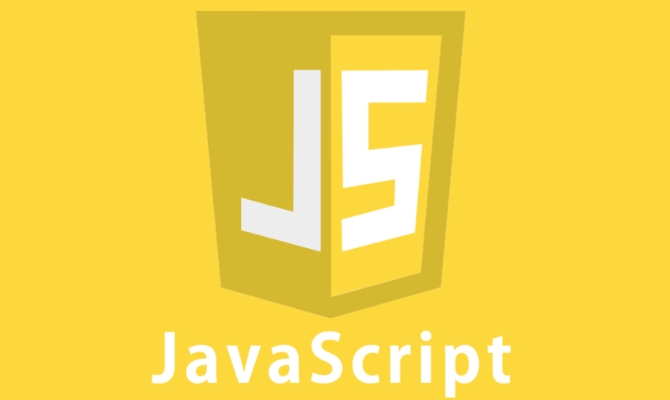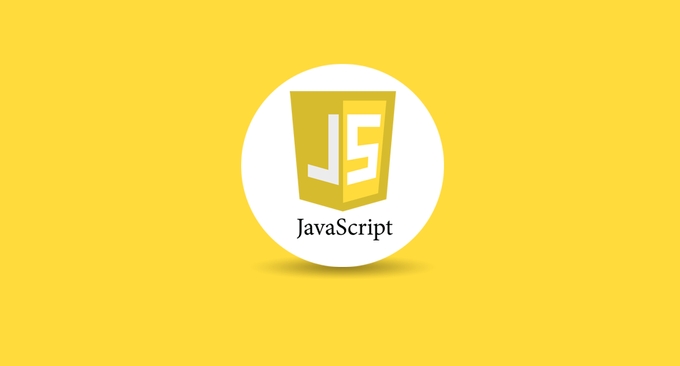Implementing WebSockets for real-time applications with JavaScript
Jul 13, 2025 am 01:49 AMWebSocket is a network protocol that implements full duplex communication between browsers and servers. Compared with traditional polling methods, it has lower latency, less bandwidth consumption and stronger real-time performance. Its core advantages include: 1. Reduce latency: no need to establish frequent connections; 2. Reduce bandwidth usage: avoid duplicate HTTP header information; 3. Strong real-time: The server can actively push messages. The front-end realizes communication by creating WebSocket instances and listening to open, message, error, and close events; the back-end such as Node.js can use the ws library to build services. Pay attention to when using: 1. Handle connection failures and downgrade solutions; 2. Add an automatic reconnection mechanism; 3. Use wss encryption to ensure security; 4. Unified message format such as JSON. Rationally managing connections and exception handling is the key to stable operation.

WebSocket is a very practical tool in JavaScript real-time applications. It can establish a persistent connection between the browser and the server and realize two-way communication. Compared with the traditional polling method, WebSocket is more efficient and responsive, and is especially suitable for chat applications, real-time data updates and other scenarios.

What is WebSocket?
WebSocket is a network protocol that allows a persistent connection between the client and the server to communicate with full duplex (i.e. both parties can send and receive messages). This is different from HTTP request/response mode, where HTTP requires a new connection to be established for each request, while WebSocket requires only one handshake to communicate continuously.

The benefits of using WebSocket include:
- Lower latency: No frequent HTTP request overhead
- Less bandwidth consumption: no duplicate header information is required for each communication
- Strong real-time performance: the server can actively push messages to the client
How to use WebSocket on the front end?
Using WebSocket on the browser is very simple. You just need to create a WebSocket instance and listen to events:

const socket = new WebSocket('ws://example.com/socket');
socket.addEventListener('open', function (event) {
console.log('Connection established');
socket.send('Hello Server!');
});
socket.addEventListener('message', function (event) {
console.log('Received message:', event.data);
});Common events include:
-
open: Triggered after the connection is established -
message: fired when a server message is received -
error: Triggered when an error occurs -
close: Triggered when the connection is closed
You can add your own business logic to these event handling functions, such as updating page content, displaying notifications, etc.
How to support WebSocket in the backend?
Different backend languages have different implementation methods for WebSocket. Taking Node.js as an example, you can use the ws library to quickly build WebSocket services:
const WebSocket = require('ws');
const wss = new WebSocket.Server({ port: 8080 });
wss.on('connection', function connection(ws) {
ws.on('message', function incoming(message) {
console.log('received:', message);
ws.send(`server response: ${message}`);
});
});In this example, we create a WebSocket server that listens to port 8080. When there is a client connection, it listens for its message and sends a response back.
If you are using a framework like Express, you can also use ws and Express to let WebSocket and HTTP share a port.
What should I pay attention to when using WebSocket?
Although WebSocket is very powerful, there are some things to pay attention to in actual use:
- Handling of connection failure : Not all environments support WebSocket, such as some old proxy or firewalls that may block connections. It is recommended to downgrade, such as switching to long polling.
- Reconnection mechanism : Network instability may cause connection disconnection, and it is best to add automatic reconnection logic to the client.
- Security : Use
wss://(WebSocket Secure) to encrypt transmissions to avoid man-in-the-middle attacks. - Message format specification : It is recommended to use JSON format to deliver messages in a unified manner to facilitate front-end and back-end parsing.
For example, adding a simple reconnect logic can be written like this:
let socket;
function connect() {
socket = new WebSocket('ws://example.com/socket');
socket.addEventListener('close', () => {
console.log('Connection is closed, reconnect after 5 seconds');
setTimeout(connect, 5000);
});
}
connect();Basically that's it. Although WebSocket is not complicated, it is necessary to pay attention to connection management, exception handling and performance optimization to run stably.
The above is the detailed content of Implementing WebSockets for real-time applications with JavaScript. For more information, please follow other related articles on the PHP Chinese website!

Hot AI Tools

Undress AI Tool
Undress images for free

Undresser.AI Undress
AI-powered app for creating realistic nude photos

AI Clothes Remover
Online AI tool for removing clothes from photos.

Clothoff.io
AI clothes remover

Video Face Swap
Swap faces in any video effortlessly with our completely free AI face swap tool!

Hot Article

Hot Tools

Notepad++7.3.1
Easy-to-use and free code editor

SublimeText3 Chinese version
Chinese version, very easy to use

Zend Studio 13.0.1
Powerful PHP integrated development environment

Dreamweaver CS6
Visual web development tools

SublimeText3 Mac version
God-level code editing software (SublimeText3)

Hot Topics
 Why should you place tags at the bottom of the ?
Jul 02, 2025 am 01:22 AM
Why should you place tags at the bottom of the ?
Jul 02, 2025 am 01:22 AM
PlacingtagsatthebottomofablogpostorwebpageservespracticalpurposesforSEO,userexperience,anddesign.1.IthelpswithSEObyallowingsearchenginestoaccesskeyword-relevanttagswithoutclutteringthemaincontent.2.Itimprovesuserexperiencebykeepingthefocusonthearticl
 What is event bubbling and capturing in the DOM?
Jul 02, 2025 am 01:19 AM
What is event bubbling and capturing in the DOM?
Jul 02, 2025 am 01:19 AM
Event capture and bubble are two stages of event propagation in DOM. Capture is from the top layer to the target element, and bubble is from the target element to the top layer. 1. Event capture is implemented by setting the useCapture parameter of addEventListener to true; 2. Event bubble is the default behavior, useCapture is set to false or omitted; 3. Event propagation can be used to prevent event propagation; 4. Event bubbling supports event delegation to improve dynamic content processing efficiency; 5. Capture can be used to intercept events in advance, such as logging or error processing. Understanding these two phases helps to accurately control the timing and how JavaScript responds to user operations.
 A definitive JS roundup on JavaScript modules: ES Modules vs CommonJS
Jul 02, 2025 am 01:28 AM
A definitive JS roundup on JavaScript modules: ES Modules vs CommonJS
Jul 02, 2025 am 01:28 AM
The main difference between ES module and CommonJS is the loading method and usage scenario. 1.CommonJS is synchronously loaded, suitable for Node.js server-side environment; 2.ES module is asynchronously loaded, suitable for network environments such as browsers; 3. Syntax, ES module uses import/export and must be located in the top-level scope, while CommonJS uses require/module.exports, which can be called dynamically at runtime; 4.CommonJS is widely used in old versions of Node.js and libraries that rely on it such as Express, while ES modules are suitable for modern front-end frameworks and Node.jsv14; 5. Although it can be mixed, it can easily cause problems.
 How does garbage collection work in JavaScript?
Jul 04, 2025 am 12:42 AM
How does garbage collection work in JavaScript?
Jul 04, 2025 am 12:42 AM
JavaScript's garbage collection mechanism automatically manages memory through a tag-clearing algorithm to reduce the risk of memory leakage. The engine traverses and marks the active object from the root object, and unmarked is treated as garbage and cleared. For example, when the object is no longer referenced (such as setting the variable to null), it will be released in the next round of recycling. Common causes of memory leaks include: ① Uncleared timers or event listeners; ② References to external variables in closures; ③ Global variables continue to hold a large amount of data. The V8 engine optimizes recycling efficiency through strategies such as generational recycling, incremental marking, parallel/concurrent recycling, and reduces the main thread blocking time. During development, unnecessary global references should be avoided and object associations should be promptly decorated to improve performance and stability.
 How to make an HTTP request in Node.js?
Jul 13, 2025 am 02:18 AM
How to make an HTTP request in Node.js?
Jul 13, 2025 am 02:18 AM
There are three common ways to initiate HTTP requests in Node.js: use built-in modules, axios, and node-fetch. 1. Use the built-in http/https module without dependencies, which is suitable for basic scenarios, but requires manual processing of data stitching and error monitoring, such as using https.get() to obtain data or send POST requests through .write(); 2.axios is a third-party library based on Promise. It has concise syntax and powerful functions, supports async/await, automatic JSON conversion, interceptor, etc. It is recommended to simplify asynchronous request operations; 3.node-fetch provides a style similar to browser fetch, based on Promise and simple syntax
 var vs let vs const: a quick JS roundup explainer
Jul 02, 2025 am 01:18 AM
var vs let vs const: a quick JS roundup explainer
Jul 02, 2025 am 01:18 AM
The difference between var, let and const is scope, promotion and repeated declarations. 1.var is the function scope, with variable promotion, allowing repeated declarations; 2.let is the block-level scope, with temporary dead zones, and repeated declarations are not allowed; 3.const is also the block-level scope, and must be assigned immediately, and cannot be reassigned, but the internal value of the reference type can be modified. Use const first, use let when changing variables, and avoid using var.
 JavaScript Data Types: Primitive vs Reference
Jul 13, 2025 am 02:43 AM
JavaScript Data Types: Primitive vs Reference
Jul 13, 2025 am 02:43 AM
JavaScript data types are divided into primitive types and reference types. Primitive types include string, number, boolean, null, undefined, and symbol. The values are immutable and copies are copied when assigning values, so they do not affect each other; reference types such as objects, arrays and functions store memory addresses, and variables pointing to the same object will affect each other. Typeof and instanceof can be used to determine types, but pay attention to the historical issues of typeofnull. Understanding these two types of differences can help write more stable and reliable code.
 How to traverse the DOM tree (e.g., parentNode, children, nextElementSibling)?
Jul 02, 2025 am 12:39 AM
How to traverse the DOM tree (e.g., parentNode, children, nextElementSibling)?
Jul 02, 2025 am 12:39 AM
DOM traversal is the basis of web page element operation. Common methods include: 1. Use parentNode to obtain the parent node, and can be chained to find it upward; 2. children return a collection of child elements, accessing the first or end child elements through the index; 3. nextElementSibling obtains the next sibling element, and combines previousElementSibling to realize the same-level navigation. Practical applications such as dynamically modifying structures, interactive effects, etc., such as clicking the button to highlight the next brother node. After mastering these methods, complex operations can be achieved through combination.






